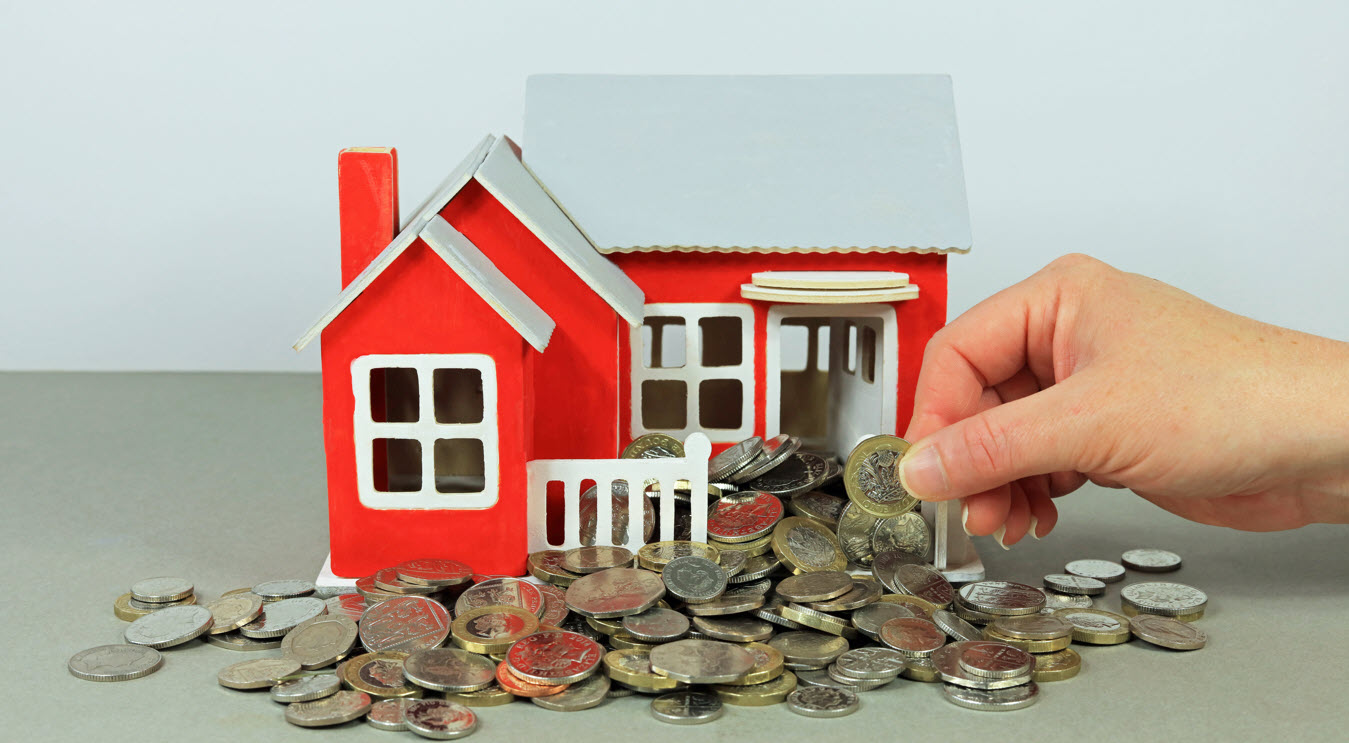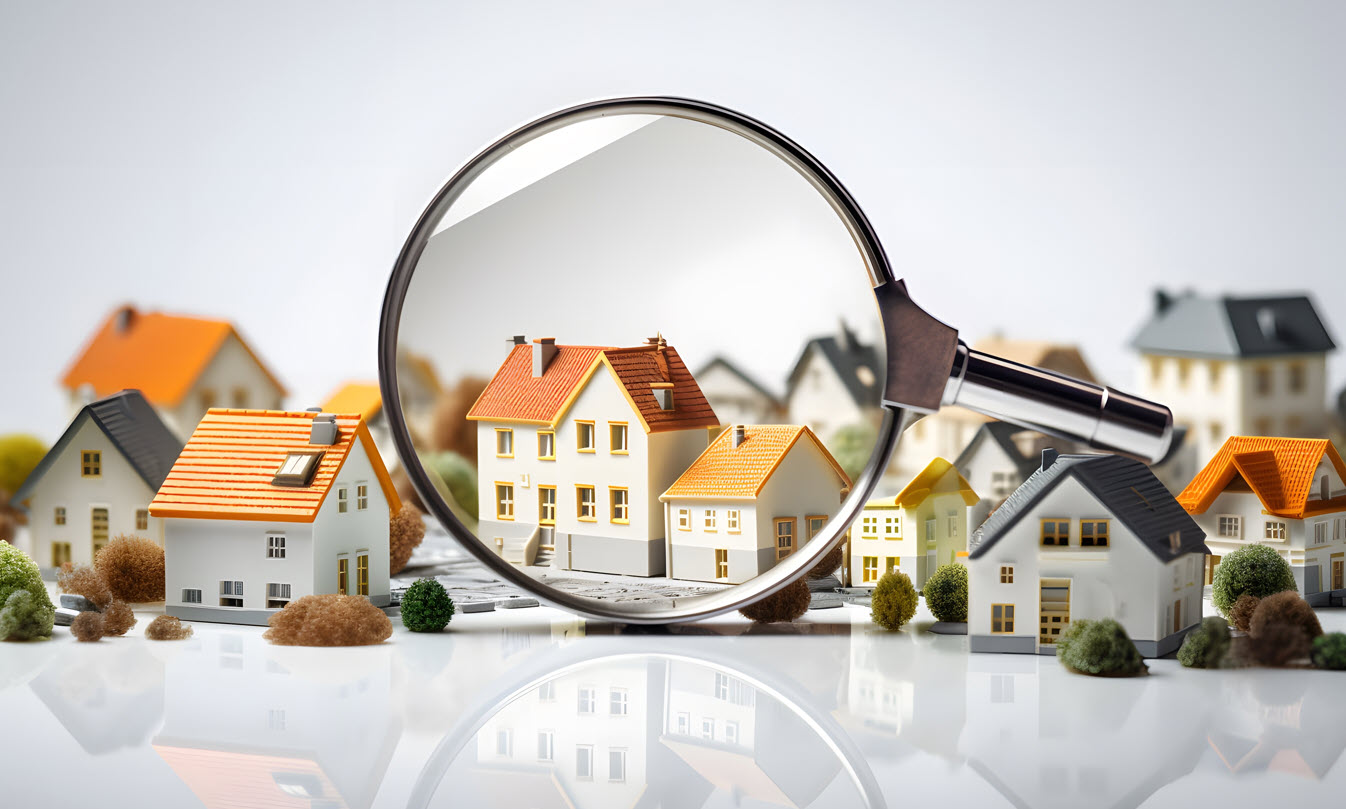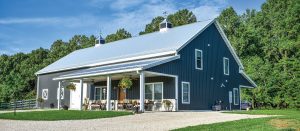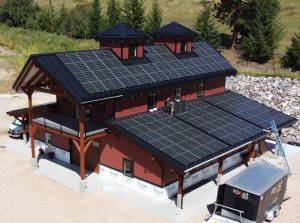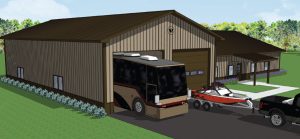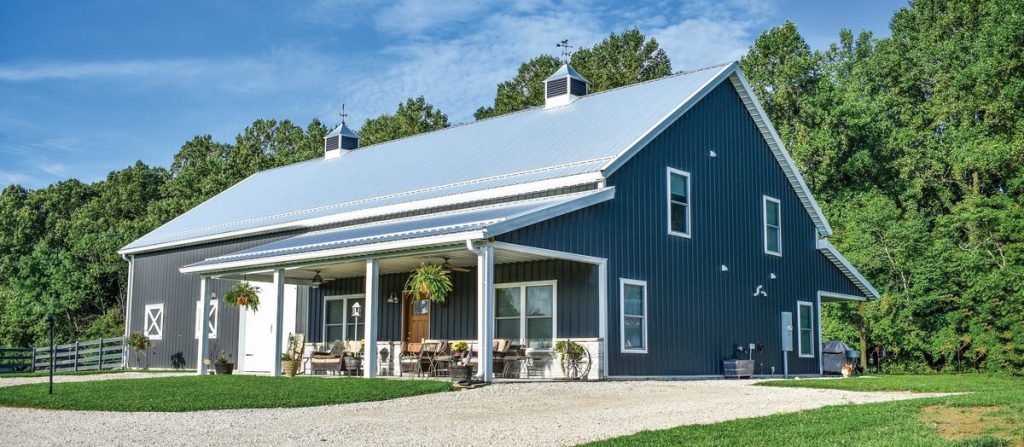
THIS IS THE FIRST ARTICLE OF OUR FIRST DIGITAL MAGAZINE, WINTER 2024.
If you are reading this, presumably you’ve heard the term “barndo” or “barndominium” before and it piqued your interest. But are you sure you know what, exactly, a barndominium is?
If you type “what is a barndominium?” into your search engine, many pictures of homes pop up, but you may find them very unhelpful in determining just what the word means. You will see tiny homes, middle-sized ranch homes, huge multi-level homes, homes that look like rustic barns, homes that look quite upscale, even homes that look like sheds. Yet, all of these are barndos.
So, what is a barndo?
Frankly, you would be hard put to find a precise and universally accepted definition of a barndo, but there are a few differences from a “stick-built” home that are generally acknowledged as making a house a barndominium. This type of home is an example of “post-frame construction,” which means the shell of the building is mainly massive posts at the corners with sturdy roof trusses that create the possibility of wide-open spaces in the interior of the building. The posts replace load-bearing walls.
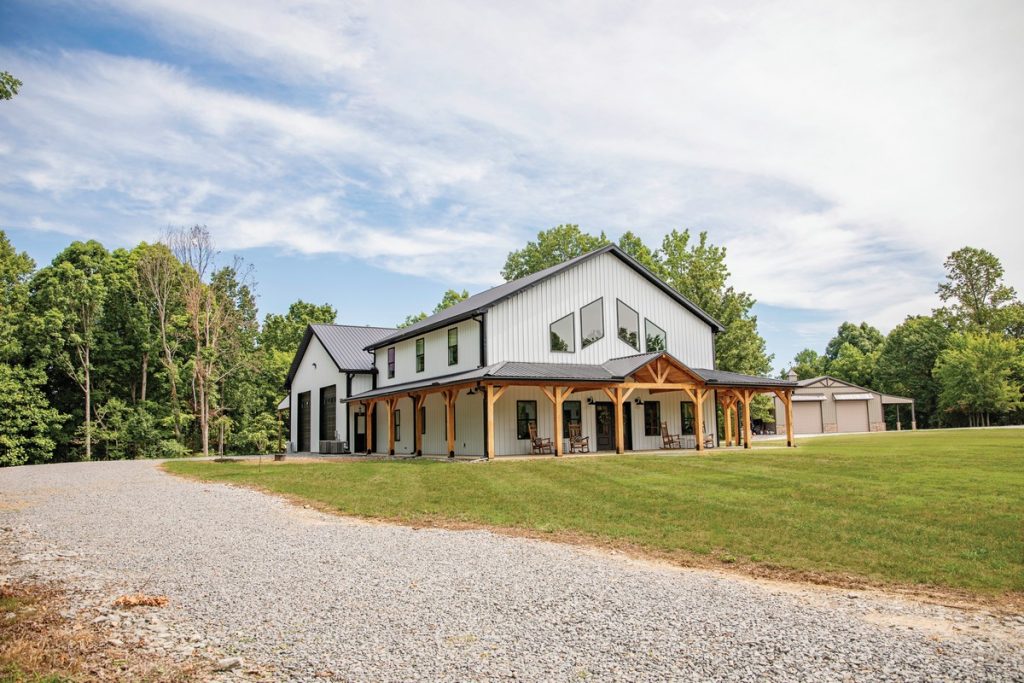
Basics of a Barndo
Post-frame construction. That means there are big vertical columns holding up the structure, and massive trusses on top of that, holding up the roof.
- Large open spaces. Post-frame construction and its big columns mean you can have large open spans, like a barn or big commercial or storage space might.
- Typically no basement but rather a slab with in-floor radiant heat. Most post-frame homes have their columns in the ground but their slabs are not sunken further into the ground, only the columns are.
- Some other usage besides residential. The “barn” part of barndo comes from the fact that barndos started when people started converting barns to homes. The typical barndo continues to very often create a second or third space; besides the home, there might be a storage space, or a workshop or art gallery, or an agricultural space … it could be almost anything.
After these basics, there are common features, but they are not absolutes. The posts will usually be sunk into the ground atop concrete footings. The exterior walls will generally not have as much wood inside them as a traditional house; it is deemed unnecessary because of the posts. Usually there is no sheathing or decking under the siding. Many barndos are on concrete slabs, and usually the roofing and walls are metal or metal with stone or other accents.
According to Emily Marshall, of Mrs. Post-Frame, barndos are about more than construction methods. In her work with people who are considering building, she has found that these would-be barndo owners are looking for a lifestyle. They visualize themselves and their families living in one of these homes on acreage out in the countryside. They imagine an indoor/outdoor kind of life where they can have gardens or crops, chickens or maybe horses, and huge patio areas that will be as much a part of their living space as the kitchen table. All of this is possible with a barndo.
Lifestyle isn’t the whole story, of course; many people are drawn to barndos for other reasons. They may be looking to save some money on their build. They may want greater freedom of design, which is achieved when load bearing walls are no longer a concern. They may be looking for an energy efficient home that still allows for high ceilings. These and many other benefits can be part of the post-frame package. However, like any large undertaking, it is best to educate yourself before taking the leap. That is what Build My Barndo is here for. Look around, read up, and learn more about what a barndominium can – and cannot – do for you.
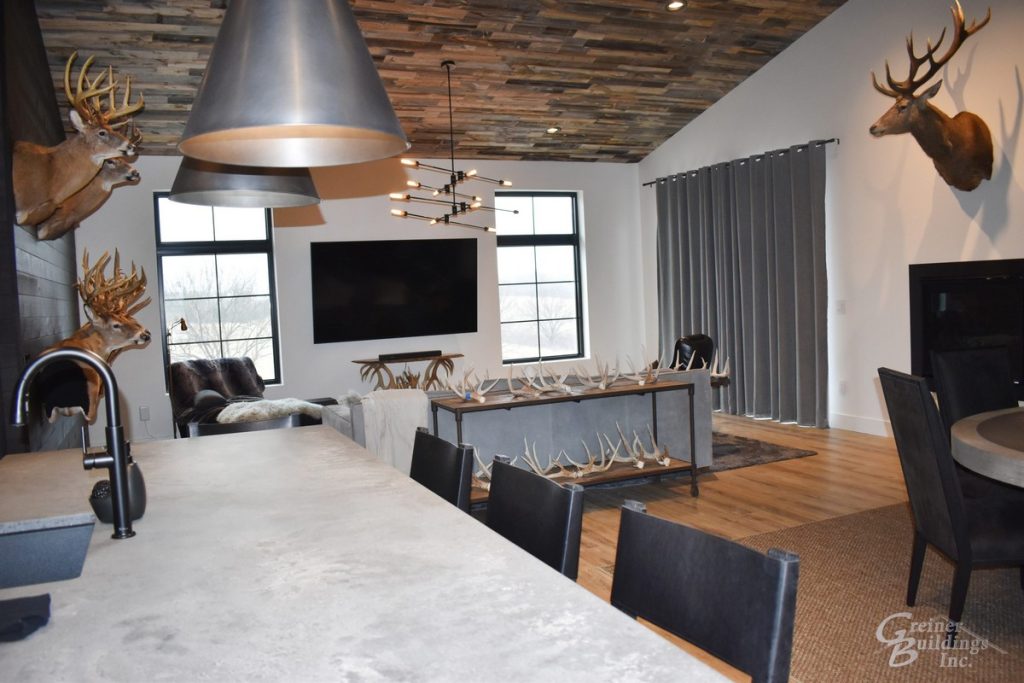
What is a Barndo? Basic Components List
There truly isn’t a “typical barndo,” yet there are many characteristics that are common in barndos, therefore, there are many similar components. Here we will outline some of them.
Barndo Foundation & Posts
Starting from the bottom, there is the foundation. The first question you will need to answer before you can get into what the foundation will be is, do you want a basement? Typically barndominiums do not have basements, which is one of the ways that many barndo owners save money on the build. If you have decided to forego a basement, then Barndos are typically built on concrete slabs with rigid foam insulation around the perimeter to prevent freezing in the cold weather. If you choose a concrete slab, you can have radiant floor heating installed resulting in delightfully cozy-warm floors. If you want the basement, then a more traditional foundation is in order.
One thing that is the same in every true barndo: It is built with posts. According to Cory Padgette at Graber Post Buildings, suppliers to the post-frame community with a building division, said there are basically three choices if you are going without a basement:
- Posts buried in the ground atop a concrete footing
- Concrete columns buried in the ground with posts bracketed atop them
- Concrete footings and wall with posts bracketed atop it
Posts are wood, either treated or wrapped for protection from moisture and insects, a precaution that is unnecessary if they are above-ground and concealed in walls.
Barndo Trusses
Trusses are another very important component of a barndo build. While this is not something you will have to make a decision about, the engineer will specify the type and number of trusses needed, you should understand how the trusses make many of your design decisions possible. They are designed to transfer all of the load to the posts.
This means that the walls on the interior space of your barndo are not load-bearing, so you are free to configure them as you like without the engineer or builder saying, “we can’t move that wall; it’s load bearing.” Not only will you have great freedom of design when you build your home, but if down the road, you want to change something, it can be much easier to achieve. For example, if you decide that since your child has moved out and their bedroom is no longer useful, it would be nice to take out the wall for a bigger family space, it can be done without worrying about loads.
Exteriors and Insulation
Many barndos are finished with metal panels for roofs and walls because of the longevity, minimal maintenance required, and recyclability of metal. Of course, metal comes in many styles and colors so there is much to choose from including board and batten style, metal shingles, and accents of stone, brick, or stone and brick look-alikes.
However, barndos can be skinned in vinyl or any material that other homes are finished with if the homeowner so desires. There is less wood in the wall of a barndo compared to a traditional home and usually no sheathing as a base for the siding to attach to, so girts are used to bridge the large spaces. Some builders, however, encourage homeowners to invest in sheathing over the shell as they feel it creates a stronger wall and it can help with noise reduction, Padgette said.
One advantage of the barndo that many homeowners like is the energy efficiency and comfort that is created by walls with large spaces between the wood. Wood can act as a bridge allowing cold and heat to pass through a wall, so the less wood the better for insulation’s sake, and these large spaces created can all be filled with lots of insulation. Closed cell foam is the insulation favored by many, others use batting, some fill the attic with blow-in insulation.
Is That All?
These are the basics of the barndo build. Based on your location, climate, and goals, your designer, contractor, or builder will advise you on these basic components. You will, of course, have to purchase many other components for your barndo, but the reality is that they are the same types of purchases you would be making if you were building your home with another type of construction. Doors, windows, cabinets, flooring, and other purchases are matters of personal choice and can really make a mark on the unique aesthetics of your build.



